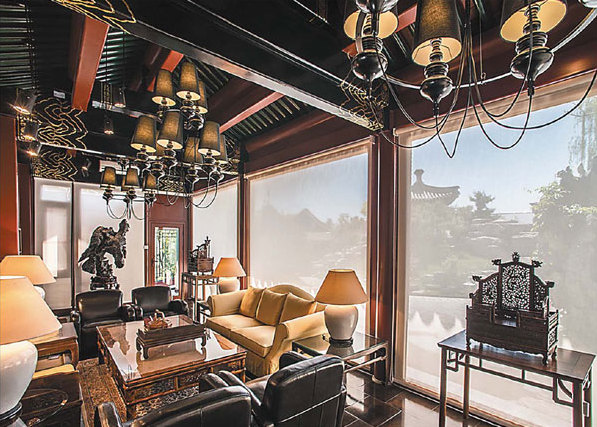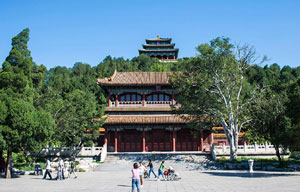Living museum of beautiful woods
 |
|
Lv Garden is more than a top-class retreat, where guests can literally travel back in time to an age of grace and beauty. Photos provided to China Daily |
Deep in the Beijing suburb of Shunyi is a tiny boutique hotel with a pedigreed collection that many museums would kill for. Yet, it is an establishment that actually has an extremely select client list - those who really appreciate antiques. Han Bingbin gets a firsthand look.
Guests at Lv Garden dine on red sandalwood tables intricately inlaid with mother-of-pearl, or sleep in antique alcove beds framed by rosewood carvings. They may lounge on rare antique sets of ebony viceroy chairs, or relax on a single deer-horn chair, previously reserved only for the highest Manchu nobility.
The best way to appreciate antique furniture is tactile. You have to look at the lustrous patina that can only come with age, admire the grains of wood solidly fused, and appreciate the workmanship that craftsmen of the past invested into each and every piece.
Lv Garden is more than a top-class retreat for those who do not have to ask the price.
It is a place where guests can experience history and art from the past, from the glory days when a master carpenter thought nothing of spending years on crafting the perfect chair, table or cabinet.
The 38-room hotel is founded on the precious personal collection of a well-known Chinese author, playwright and screenwriter who is also an experienced hotelier. Lv Garden was actually his home before it was converted into this exclusive retreat that is defined as an "art gallery with rooms".
It is home to nearly 100 pieces of Qing Dynasty (1644-1911) zitan (red sandalwood) furniture and countless rare stones, calligraphy and paintings from the past 400 years. But the pride of place belongs to about 500 pieces of rare huanghuali (fragrant rosewood) furniture from the Ming Dynasty (1368-1644), displayed in the numerous rooms hidden in individual enclaves very much like the classic courtyards of the Forbidden City's old aristocracy.
They are scattered about the rooms, where guests can touch, sit and sleep on the antiques and get a rare insight into the relation between past and present.
The legendary huanghuali wood, gold outside and reddish-brown at its heart, has been treasured as far back as the Tang Dynasty (AD 618-907) and was mainly found in Hainan and Guangdong provinces and in areas neighboring today's Vietnam.
The trees grow so slowly that it usually takes hundreds of years for them to be usable as furniture and really large timber may be thousands of years old.
After the mid-Ming Dynasty, a thriving economy brought about a flurry of mansion building among the upper class, and the demand for fine furniture peaked. By the time of the late Qing Dynasty, fragrant rosewood in China was almost extinct.
Its rarity increased the value of this faintly scented wood, but it was also the impeccable craftsmanship of that era that made this style of furniture so valuable.


















